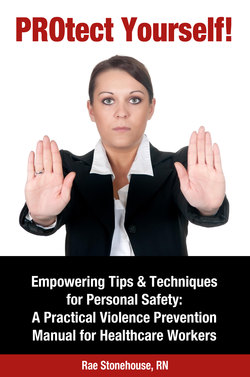Читать книгу PROtect Yourself! Empowering Tips & Techniques for Personal Safety: A Practical Violence Prevention Manual for Healthcare Workers - Rae Stonehouse - Страница 29
На сайте Литреса книга снята с продажи.
B.Speech
Оглавление•Use simple, concrete, positive statements. Say what you want them to do not what you don’t want them to do. For example, “Please sit over here” instead of “Don’t pace in the dining room.”
•State instructions or questions one at a time. When they can respond appropriately, they are regaining control.
•Keep voice volume appropriate for distance and the person’s ability to hear. Raising the voice raises the pitch. This is the hardest range for the elderly to hear.
•Use a smooth supportive tone.
•Use normal speech rhythm. Speaking too fast, too slowly or in a jumpy excited manner can irritate the person and escalate the problem. Address persons by name, e.g. “John”...
•Pay attention to the response. Do not assume your message is understood.
•Do not use jargon.
•Avoid giving advice.
•Listen and learn, open and active listening (nod and “yes, yes”). What does the client see as the problem and what do they expect of you?
•Use silence and restatement to clarify message.
•Ask questions to seek information, a favour or to distract the person.
•Avoid sarcastic or insulting remarks. Be careful of using humour. When in doubt, don’t try to be funny. Humour is a high risk, high gain technique.
•Reassure acting-out and frightened individuals that you, the care-giver, did not intend to be a threat.
•Telling aggressive people their behaviour frightens, worries or upsets you can be appropriate. They may not see their behaviour this way and may attempt to change it.
•Asking individuals who are aware of their aggressive urges to tell you when something you do or say makes them angry may defuse a touchy situation.
•Verbal abuse is not always a safety valve and may aggravate assault.
